#species extinction
Explore tagged Tumblr posts
Text
“60 per cent of the mass of all mammals are domesticated animals - cattle, swine, sheep, horses, cats and dogs. For birds, it is even more stark. Sixty per cent of birds on Earth are from a single species - domesticated chickens. Taken as a whole, the mass of human produced material is, as of 2020, about equal to the mass of living material on earth.
If we were to sample the planet today in the same way that we sample the fossil record, we would look at the distribution of bones, and conclude that something very strange was going on so that so much of the vertebrate biomass was made up of so few species. We would be talking in terms of catastrophic environmental damage, of mass extinction.
Indeed, the biomass of wildlife has declined at a horrifying rate. The world into which Emilio Marcos was born in 1978 was home to 2.5 times as many wild vertebrates as the one in 2018. In a geological snap of the fingers, we have lost more than half of the living individual vertebrates on the planet.”
-Thomas Halliday, Otherlands
671 notes
·
View notes
Text
I hate, hate, HATE when a vegan or vegetarian accidently eats/ uses an animal product or has a moment of weakness and gives in to a little spoon of dairy ice cream or meat etc and everyone(almost always non vegans) looses it and goes off on that person!
They always go “wasn’t that person supposed to be vegan?” or “lmao see!? You’re not as righteous as u thought u were” some even go as far as to accuse that person of being a “fake activist”!
I hate that so much cuz WHAT ARE YOU DOING TO HELP STOP ANIMAL CRUELTY!?
WHAT ARE YOU DOING TO STOP SPECIES EXTINCTION!?
WHAT ARE YOU DOING TO REDUCE HUMANITY’S IMPACT ON THE PLANET!?
WHAT ARE YOU DOING TO HELP MAKE SURE FUTURE GENERATIONS HAVE A HABITABLE WORLD TO LIVE IN!?
The imperfect vegans and vegetarians are at least putting in the effort!
You’re proudly being part of the problem while mocking, criticizing and ridiculing people who are trying to be part of the solution for not doing it perfectly!? Go f*ck yourself actually!
#vegan#veganism#animal cruelty#animal abuse#dairy#meat#ice cream#global warming#climate change#vegetarian#activism#fake activism#hypocrites#hypocrisy#meat eaters#species extinction#criticism
23 notes
·
View notes
Text

4 notes
·
View notes
Text
youtube
Leaked JPMorgan Report: 'Cannot Rule Out' Human Extinction.
Most Wall Street reports are dry and deal with the stock market, but a leaked file from bank JPMorgan caught our attention: analysts are concerned about the tail risks of climate change and they "cannot rule out" catastrophic outcomes that threaten the survivability of the human race.
They are concerned about the uncertainty of how much temperatures will rise in response to increasing CO2 levels, and warn of the half dozen, unpredictable feedback loops that could worsen manmade warming.
The bank's analysts are also concerned of a lack of collective action politically, and explain that this will probably lead to world governments doing nothing to reduce carbon emissions meaningfully before 2100 — openings the Earth up to "tail risks" of 5 or 6 degrees (Celsius) of warming that could threaten most complex life.
They predict governments will likely turn to geo-engineering solutions later this century, such as cloud modifying or sun shields, each having their own set of risks.
13 notes
·
View notes
Text

The Science Manuscripts of S. Sunkavally, p 749.
0 notes
Text
Sandy Solomon: Grief
I know the lion and the elephantare doomed as surely as I readabout the so-called extinction event on which the world is already launched. None of my favorite animals will be spared: whales or sloths, orangutans or pandas, gorillas or bears. All the verbs are passive here—no one in charge, all complicit: the poor anxious to survive; the rich who take the greatest share, the greatest profit; the…
0 notes
Text
"During an archaeological dig in a desert area north of Jerusalem 40 years ago, a seed was discovered which was determined to be in pristine condition but had obviously seen many a year.
Now, despite falling from its parent 1,000 years ago, it has grown into a mature tree, and botanists examining it believe it may be an extinct species that was used for medicinal purposes for thousands of years—even receiving a nod in the Bible.
Neither Israeli botanists, nor Dr. Sarah Sallon, a physician who founded the Louis L. Borick Natural Medicine Research Center at Hadassah University Medical Center in Jerusalem, could determine what species it was from simply from the seed covering. So they did what nature intended—they planted it.
Using a well-documented technique that saw 2,000-year-old date palm fruit pits germinate, Dr. Sallon soaked the seed in hormones, liquid fertilizer, and water, and then planted it in a pot of sterile seed; then waited.
Despite its genetic code being exposed to environmental stressors for over 1,000 years, the seed sprouted after 5 weeks. The shoot was protected by a caplike feature called an operculum. As the shoot grew, the operculum was shed—leaving something for the team to radiocarbon date. It narrowed down the age of the almost 10-centuries-old seed to between the years 993 an 1202.
Fast forward 14 years and the plant has become a 10-foot-tall tree. Dr. Sallon shared images of the tree, its bark, and its leaves with botanists around the world. One expert suggested it belonged to the genus Commiphora, found across the Arabian Peninsula and parts of Africa. A genetic analysis subsequently revealed this was the case, but a perfect match was lacking.
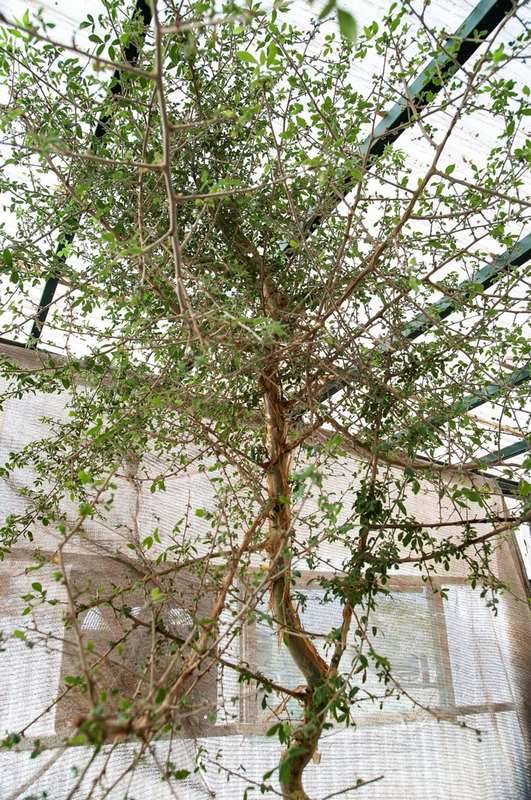
Pictured: The tree, now 14 years old.
Dr. Sallon and her team thought it was an extinct species known from history as Judean Balsam, but the best way to confirm that suspicion would be to have some aromatic traces similar to the resins of the myrrh tree to which it is related. However, no such fragrant compounds were detected.
Instead, the chemical analysis of the leaves identified a group of phytochemicals known as guggulterols which have been observed in a related species called Commiphora wightii that’s known to possess certain cancer-fighting properties in its resin.
A medicinal balm, the origin of which is not known, is mentioned in multiple historical texts including the Bible as ‘tsori,’ and rather than the fragrant Judean Balsam, it’s this tsori that Dr. Sallon and her team believe they have found.
They must wait until the tree, now 14 years old, produces flower or fruit to know for sure if it’s an extinct species, and if so, how to perhaps keep it alive.
Dr. Louise Colville, senior research leader in seed and stress biology at Royal Botanic Gardens, Kew, in London who wasn’t involved in the research, told CNN that it was a major accomplishment to grow a seed that old and possibly lead to a resurrection of this Biblical botanical.
“What’s surprising in this story is it was just a single seed and to be able to have one chance for that to germinate is extremely lucky,” she said.
“Working in a seed bank, seeing the potential for that extreme longevity gives us hope that banking and storing seeds that some at least will survive for very long periods of time.”"
-via Good News Network, October 8, 2024
--
Note: This is such a good demonstration of why seed banks are so important!! They give us such real and massive hope for deextinction and the revival of endangered species.
#botany#plant biology#endangered species#extinct species#deextinction#ancient medicine#jerusalem#biblical#medicinal plants#seeds#seed bank#good news#hope#paleobotany
9K notes
·
View notes
Text
Honestly? i'm kinda glad China is so protectionist over their pandas. Dominica entrusted their national bird, the critically endangered Sisserou (Imperial Amazon), to a German-based "conservation" organization (It's essentially a glorified private aviary that covertly trafficks rare parrots) that's now refusing to repatriate the animals back to their rightful homes and is still illegally exporting birds from Dominica to Germany as recently as 2018 despite outcries from both local and international experts. Many of the OG zoos were stocked via colonial conquest and now the western hegemon that's responsible for so many of these species' decline also imposes itself as the stewards of their recovery. we have to collaborate with and respect the people who share an ecosystem with the animals we love, without local support recovery programs will not thrive.
#If you claim to love a species and want to save it from extinction but treat the locals with disdain you are not helping#in fact you might just make things worse
2K notes
·
View notes
Text
Many boys desire a big dinosaur GF, but others have even bigger ambitions!


Let there be more dino women!
#feathered dinosaurs#dinosaur#feathers#extinct species#dromaeosaur#raptor#female#cute#art#prehistoric species#anthro#anthropomorphic#tf#transformation#tf art
3K notes
·
View notes
Text
I need you all to appreciate how crazy it is to have watched the scimitar horned oryx go from a poster child for "it only exists in zoos" to merely endangered (not even critically endangered!) over my lifetime.
So many heroic people contributed ridiculous amounts of time and effort to make this captive breeding and reintroduction effort a success.
#conservation#biodiversity#good news#hope#reintroduction#endangered species#animal conservation#zoos prevent extinction#captive breeding#environment#positive news#positivity
3K notes
·
View notes
Text
https://www.washingtonpost.com/world/2024/01/24/white-rhino-embryo-surrogacy/
(source: washington post | jan 2024)
scientists say opens the way to saving the endangered northern white rhino. Only two females exist in the world, Najin and daughter Fatu, and both are unable to carry pregnancies. Najin and Fatu live at Kenya’s Ol Pejeta Conservancy, which was also home to Sudan, the last male northern white rhino, which died in 2018.
0 notes
Text
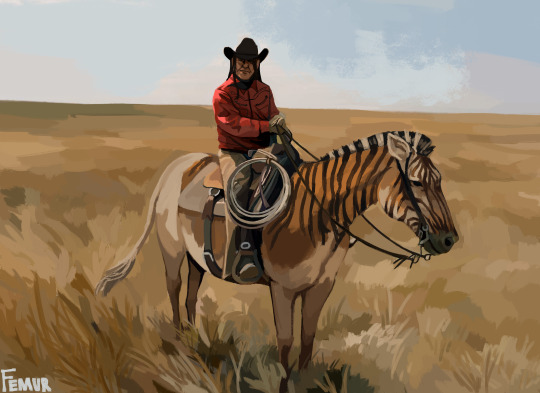
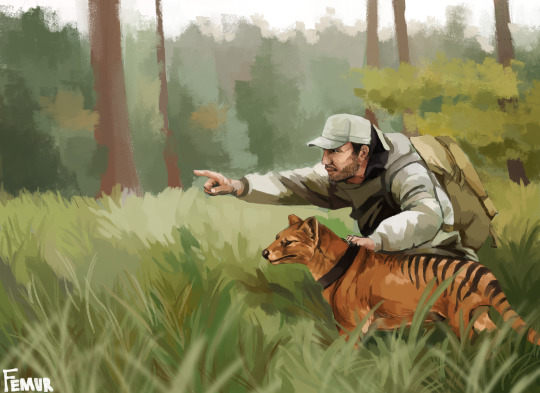
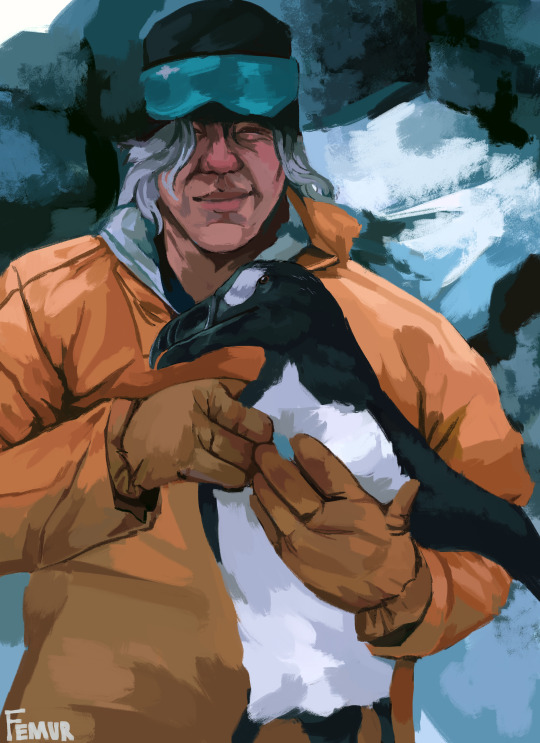
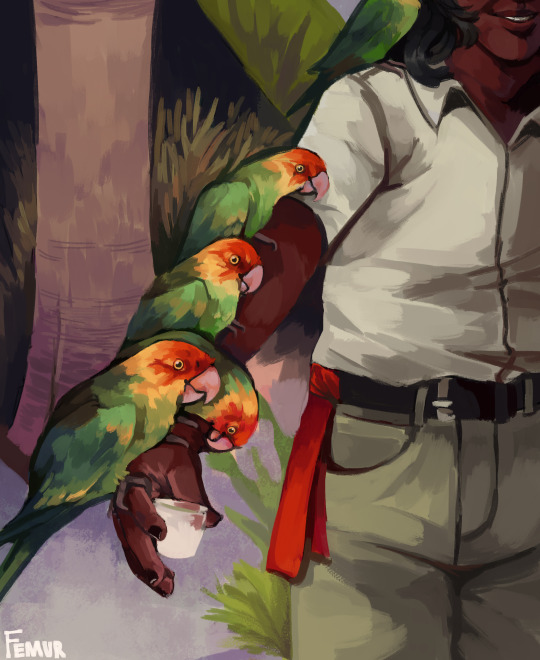
Something that could have been
#femurs art#carolina parakeet#quagga#great auk#extinct animals#extinct species#this was for a school thing#also this isnt supposed to be realistic#so like. i know that thylacines wouldnt make very good hunting companions but that wasnt the point of the piece#thylacine
18K notes
·
View notes
Text
Loss and Reintroduction of Beavers
Some explanation of the importance of beavers and how reintroduction is going in Eurasia.
Beavers
In North America, beavers are a keystone species. They influence the movement of rivers, and thus, impact many other species in biological communities. They provide food to species they are prey of, and change the landscape with their own eating habits.
The dams they create increase sizes of ponds and can become wetlands - increasing the habitat space for other species. This also increases biodiversity by allowing plants that thrive in flooded areas to emerge while reducing flood risks by holding back large build-ups of water1. Additionally, dams are important filters for downstream water. Water run-off from urban and agricultural areas often carry harmful amounts of sediment, nitrogen, and phosphorus, which are primary sources of algal blooms - an occurrence that often results in a lot of fish dying. Beaver dams help filter these excess nutrients from going downstream, making it cleaner2.
The functions of dams could be done by human intervention and innovation, and in many places are, but beavers are completely content to create and maintain dams, why not let them? They are useful aside from dams, anyway, as they also serve the important role as a herbivore and a prey animal for other species.
Gone from Eurasia
For centuries, beavers have been highly important to humans, as well. The Eurasian beaver, also called the European beaver, was hunted extensively for its fur, meat, and castoreum, which is used in fragrances and food. They became extinct in England, Wales, and Scotland by the 1500s3. By 1900, the population was about 1,200 individuals in Europe.
These losses resulted in biodiversity and habitat quality loss for Eurasian countries. Multiple studies have reported on lower plant diversity, increases in dominant plant species foliage cover, lower invertebrate diversity, and many other impacts as a result of the absence of beavers4. Many studies, however, specifically reflect on the impact of beaver loss in the context of reintroduction.
Reintroduction
The Eurasian beaver now has an estimated population of 1.2 million5. The IUCN Red List last assessed it in 2016 and it is in the “Least Concern” category6.
Eurasian beaver reintroduction has taken place in many countries to varying degrees, including France, Finland, Germany, Latvia, Lithuania, and Poland7. Many countries, like France and Poland, faced issues relating to a lack of coordination with other official parties and establishing procedures to ensure the success of the reintroduced animals7. In other places such as Latvia and the Netherlands, reintroduction faced issues associated with human activity, like damage to crops and drainage canals7. These down sides are more of a result of continual habitat loss for wild species as opposed to a problem with the animals themselves.
The benefits of reintroduction have been extensive. In places like Scotland, reduced downstream levels of phosphorus and nitrogen because of dams have been observed, as well as the presence of organisms indicative of enriched conditions9.
In Britain, reintroduction trials have resulted in increased biodiversity in plant and animal species, and more diverse landscapes that support different wildlife and human activities11.
There are also some unintended benefits of beaver reintroduction. A study in Sweden reflects on the unexpected irruption of the beaver population, which is usually expected to not occur because the species faces the same aboriginal factors that regulated their numbers before extinction8. Witnessing the irruption of the Sweden beaver populations led researchers to more closely assess the relevant environmental factors and theorize that wolves might be the missing aboriginal factor that would have limited the beaver population8. Reintroducing and monitoring beavers in Sweden raised further awareness and knowledge about how the environment might have been kept in check before human alteration. It lifted new questions and information that can be used in further research and theorizing.
Tourism is another factor not as frequently considered with beaver reintroduction. Wildlife tourism can be a dissenting topic because of its history of environmental damage and intrusion in ecosystems. But more recent research has enabled it to become less intrusive and able to help people learn about the environment without harming it. In Great Britain, one study found tourism to see a reintroduced population of beavers has been economically beneficial to the local community10. Many people now actively seek out positive experiences with the environment, especially when it involves cute rodents. Fortunately, this provides more reason for environmental initiatives to protect and improve the ecosystems around us.
Reintroduction takes decades if not centuries. After hundreds of years without a major species, ecosystems need time to readjust. Additionally, animal species cannot be simply classified as ‘good’ or ‘bad’. They can be invasive in some places, and even in their endemic habitat might sometimes be deleterious. The spread of human influence and activity complicates the relationship that beavers have with their environment. But data and current experiences indicate that beavers are ultimately crucial to many ecosystems. We will likely continue to see these benefits as environments readjust.
Additional Resources
1.https://parks.canada.ca/pn-np/mb/riding/nature/animals/mammals/castors-beavers
2. Habitat Engineering by Beavers
3. https://ptes.org/get-informed/facts-figures/eurasian-beaver/
4.https://www.martinezbeavers.org/wp-content/uploads/2018/01/Stringer-Gaywood-2016-The-impact-of-beavers-on-biodiversity-and-the-ecological-basis-for-their-reintroduction-to-Scotland-Mamm-Rev-DOI-10.1111-mam.12068.pdf
5.https://scottishwildlifetrust.org.uk/species/beaver/#:~:text=By%20the%2016th%20Century%2C%20the,to%20number%20around%201.2%20million.
6. https://www.iucnredlist.org/species/4007/197499749
7.https://www.researchgate.net/profile/Fran-Tattersall/publication/229639593_Reintroducing_the_European_Beaver_to_Britain_nostalgic_meddling_or_restoring_biodiversity/links/602fda36a6fdcc37a8382690/Reintroducing-the-European-Beaver-to-Britain-nostalgic-meddling-or-restoring-biodiversity.pdf
8. https://www.jstor.org/stable/pdf/2386513.pdf
9. https://onlinelibrary.wiley.com/doi/abs/10.1111/fwb.12721
10. https://www.sciencedirect.com/science/article/pii/S1617138120301667
11. https://ecopsychology-journal.eu/v7/EJE%20v7_Gandy_and_Watts.pdf
#beavers#European beaver#eurasian beaver#article#research#environment#species extinction#species reintroduction#nature
1 note
·
View note
Text

My old piece with quaggas.
watercolour on wallpaper back
4K notes
·
View notes
Text
Michael Daley: Ground Work
The Earth will be saved when our breed is extinguished, goes the thinking of some who have ceased consuming its fossilized strata,depleting the soil, the breathable air, ensnaring the wild flow of rivers and denying that icebergs sink in the rising seas.Who’ve reckoned it worth denying themselves the gift of one more child, abandoned electronic cities, decamped to far islands where omnivorous…
0 notes
Text
A study that just came out demonstrates that outdoor cats are known to prey on over two thousands species of wild animal, from mammals to birds to insects. That includes 347 species that are endangered, threatened or otherwise of concern, and they've been a key factor of the permanent extinction of over 60 species. And while cats may not always bring home what they catch, chances are if your cat is allowed to roam unsupervised outside, they're killing your local wildlife.
Why is this so important? Worldwide, wild animal populations have decreased in number by 69% in the past fifty years; that means that in my lifetime (born in 1978), the sheer number of wild animals in the world has been decreased by over half. Even "common" wild species are less numerous than before. While habitat population is the single biggest cause of species endangerment and extinction overall, outdoor and indoor/outdoor cats are a significant cause as well. In fact, they are the single biggest cause of human-caused mortality in wild birds.
Most importantly, it's very, very simple to fix this problem: keep your cats indoors, and spay and neuter them. If your cat is bored, they need more enrichment, and there are plenty of ways to make your home more exciting for them, from bringing home cardboard boxes for them to explore, to playing with them more often. If you want your cat to get some outdoor enrichment, leash train them (yes, it can be done!) If you have the space and resources, build them a catio where they can be safe from outdoor dangers like predators and cars, while also keeping local wildlife safe from them.
If you just give into their whining and pawing at the door, then they know that that's what they have to do to get their way; I know it's a tough transition, but it's worth it in the end for everyone involved. Cats are domesticated, which means they are not native anywhere in the world; there are exactly zero ecosystems in which they belong, save for the safety of your home. It is your responsibility to give them an enriching environment without taking the shortcut of letting them go wreak havoc outside.
#cats#outdoor cats#feral cats#nature#wildlife#animals#ecology#environment#conservation#science#scicomm#birds#endangered species#extinction#domesticated animals#domestication#biology#animal behavior#animal welfare
8K notes
·
View notes